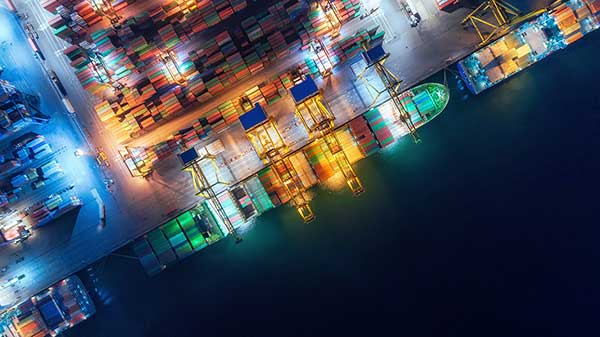Although the current tariff environment brings uncertainties for procurement contracts, parties have options that can help mitigate risk.

By Scott Bowers and Lee Smith
Among the impacts of tariffs enacted by the Trump administration in 2025 has been the introduction of significant supply chain and cost disruptions to existing procurement arrangements and the need for novel thinking when it comes to traditional procurement considerations and practices.
In the industrial project development space, for example, tariffs have directly increased the costs of steel and aluminum inputs, and other inputs are expected to be hit by tariffs soon. Within this sector, projects requiring specialized or bespoke equipment manufacturing may only have a small handful of viable manufacturers to look to on a global scale, some of whom themselves may rely heavily on the importation of tariffed components from other countries.
In many instances, procurement agreements entered into in 2024 or years prior for delivery of goods in 2025 have had to be reevaluated due to unanticipated cost impacts on both suppliers and buyers. On the supplier side, for example, a guaranteed maximum price engineering, procurement and construction (EPC) agreement under which tariff-affected equipment must be supplied as part of a development project may force the EPC contractor to absorb the increased costs associated with new tariff rates not contemplated during the initial contracting process. On the other hand, buyers ordering specialized equipment for projects with components sourced from countries facing high tariff rates may be locked into procurement agreements that place the onus of duties and tariffs on the buyer. Having to revisit agreed economic terms or identify alternative sources for materials and components that are less impacted by increased tariff rates midway through a project inherently inserts delay and uncertainty that contracting parties wish to avoid. Accordingly, careful consideration of strategies to mitigate the impact of increased tariffs in the current international trade climate is warranted.
At the outset, it is important to understand that in the U.S., it is the importer of record – usually the direct buyer – that actually pays the tariff on imported goods. However, the parties to a procurement agreement are free to allocate the ultimate economic responsibility for tariff costs through the contracting process. While the relative bargaining leverage of the parties will bear upon ultimate outcomes in any contract setting, several strategies can help parties navigate tariff uncertainty in procurement practices.
Understand if and how tariffs are addressed in your existing agreements. It is common for tariffs and duties to be captured in the definition of “Taxes” or within another definition in a contract. It is important to know whether tariff obligations have been specifically assigned to a party before proceeding into a negotiation.
Address tariff changes in force majeure clauses, which relieve a party of its performance obligations for a defined period of time in the event of specified unforeseen events. In practice, this may take the form of specifying that a tariff increase affecting equipment or materials above a predefined material percentage or dollar threshold excuses performance for a period of time until, for example, the tariff increase has abated or the parties have otherwise agreed to suitable alternative arrangements, failing which a termination right would come into play. Tariffs have not traditionally been addressed by force majeure clauses, and so it is important that contracting parties explicitly refer to a tariff implementation or change (or the extent of either of these) as being a force majeure event in force majeure clauses, otherwise such events are unlikely to be interpreted as such by default. Additionally, depending on the complexity of the underlying agreement, the parties should consider limiting the impact of a tariff-driven force majeure event to suspending the underlying obligations (or an appropriately defined subset of them), and providing a limited termination right, only for the specific equipment, component or other project input that is affected by the tariff, so that unrelated obligations (or those not impacted by the tariff change) are unaffected by the tariff-triggered force majeure event. This exercise requires careful analysis of all of the material obligations of the parties pursuant to the underlying agreement to ensure that the impact of the tariff-triggered force majeure event is not more expansive or overbroad than is appropriate – in particular taking into account the project or strategic business objective at hand, and that it otherwise does not result in unintended or unconsidered contract consequences.
Importantly, “payment obligations” are generally not suspended when force majeure events occur in commercial contracts. Accordingly, buyers in particular should be cautious in drafting such clauses to be clear that the payment obligation for increased tariffs is suspended for the agreed period.
Related to force majeure events, addressing tariff impacts through change-in-law provisions – where a change in laws results in material cost increases above a defined threshold for either party, providing for contract termination options or alternate sourcing requirements for suppliers – can be an effective strategy. Since tariffs can be changed through a number of actions including executive orders, it is important to ensure that any such change-in-law provision includes action by executive order. As with force majeure clauses, care should be taken by the contracting parties to ensure that contract obligations that should not be impacted by a tariff change are not affected by a tariff-driven change-in-law provision, and more generally that the implications of a tariff-triggered change-in-law provisions are thoughtfully tailored and considered to avoid unintended consequences to the parties and the broader underlying business transaction.
For both suppliers and buyers, including caps on financial responsibility for tariff cost increases can aid in budgeting and cost forecasts. In some cases, it may be feasible to introduce shared cost-savings provisions into procurement agreements in which suppliers benefit from a portion of the savings achieved by sourcing comparable-quality materials and components at a lower cost from sources less impacted by high tariff rates. In this respect, it is important that suppliers work to identify alternate, less costly country of origin manufacturers at the outset of the contracting process.
Suppliers should be wary of entering into fixed-price contracts across the board in settings likely to be impacted by tariff changes. Including nuanced exceptions to traditionally fixed-price contracts that address tariff increases is advisable.
Consider the role of Incoterms in procurement contracts, which allocate responsibility for shipping, insurance, and duty costs, among others, as between sellers and buyers. While the Delivery Duty Paid (DDP) Incoterm is the only one that by default places the responsibility for import duties on the seller, Incoterms can be modified contractually to deviate from the default allocations. However, it is important that the contracting parties ensure that any Incoterms used in procurement contracts align with other economic cost allocation provisions that are negotiated into the agreement.
While the 2025 U.S. tariff environment has introduced much uncertainty into the market, thoughtful, proactive and tailored contracting practices can be leveraged to reduce risk in procurement arrangements and provide more predictable outcomes for both suppliers and buyers.
About the Authors:

Scott Bowers is a shareholder in Baker Donelson’s corporate and real estate groups who represents clients in both traditional industrial and renewable energy project development, and domestic and international mergers, acquisitions, and strategic corporate transactions.

Lee Smith is a shareholder in and leader of Baker Donelson‘s International Trade and National Security practice, advising clients on matters involving export controls, customs compliance, trade remedy investigations, trade policy, market access, and free trade agreement interpretation.
In this episode, I sat down with Beejan Giga, Director | Partner and Caleb Emerson, Senior Results Manager at Carpedia International. We discussed the insights behind their recent Industry Today article, “Thinking Three Moves Ahead” and together we explored how manufacturers can plan more strategically, align with their suppliers, and build the operational discipline needed to support intentional, sustainable growth. It was a conversation packed with practical perspectives on navigating a fast-changing industry landscape.